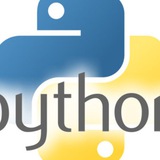tg-me.com/pythonl/4833
Last Update:
Представь структуру данных, которая:
• работает как dict — доступ по ключу
• работает как list — доступ по индексу
• сохраняет порядок вставки
• поддерживает .index(key) и .key_at(i)
📌 Задача: Реализуй класс IndexedDict, который делает всё это.
🔍 Пример использования:
d = IndexedDict()
d["a"] = 10
d["b"] = 20
d["c"] = 30
print(d["a"]) # 10
print(d[0]) # 10
print(d[1]) # 20
print(d.key_at(1)) # "b"
print(d.index("c")) # 2
for k in d:
print(k, d[k]) # перебор по ключам
⚠️ Подвох:
• Просто наследовать
dict не получится — d[0] будет интерпретироваться как ключ, а не индекс • Придётся реализовать двойную логику доступа вручную
• Нужно корректно поддержать
__iter__, __getitem__, __len__ и др.✅ Решение:
```python
from
class IndexedDict(MutableMapping):
def __init__(self):
self._data = {}
self._keys = []
def __getitem__(self, key):
if isinstance(key, int):
real_key = self._keys[key]
return self._data[real_key]
return self._data[key]
def __setitem__(self, key, value):
if key not in self._data:
self._keys.append(key)
self._data[key] = value
def __delitem__(self, key):
if key in self._data:
self._keys.remove(key)
del self._data[key]
def __iter__(self):
return iter(self._keys)
def __len__(self):
return len(self._data)
def index(self, key):
return self._keys.index(key)
def key_at(self, idx):
return self._keys[idx]
```
📈 Зачем это нужно:
• Отличная тренировка на переопределение магических методов
• Часто встречается в фреймворках (Pandas, SQLAlchemy)
• Тестирует знание ABC-классов (`collections.abc.MutableMapping`)
• Полезно для построения кастомных структур данных
Хочешь версию с `__contains__`, `__reversed__`, типизацией и сериализацией — пиши 💬
@pythonl
